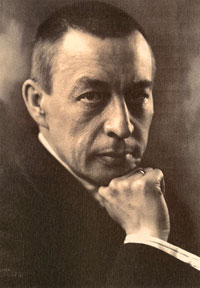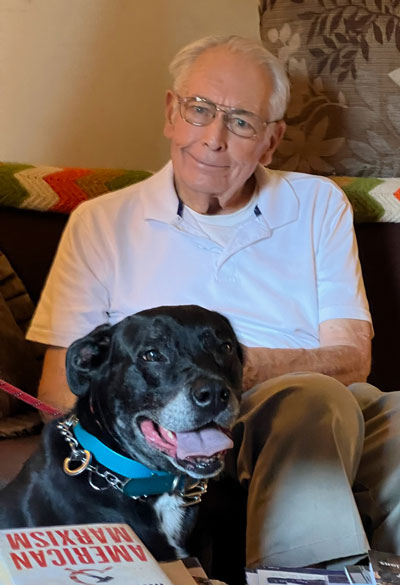
Despite having a long and public career as a classical music composer and an acclaimed musician who was called “the last great figure of the tradition of Russian Romanticism”, who was an orchestral conductor from time to time, and who was one of the greatest concert pianists of the 20th century, Sergei Rachmaninoff (1873-1943) was known to be an intensely private person. He was a man who loved his native Russia despite leaving it when Marxism obliterated its historic culture—a man who lived much of his life in Europe and the United States yet never fully learned the English language—a man who suffered severe depression in his early career to such an extent that he almost abandoned composing and performing classical music in his twenties—an apolitical man who despised Marxism when it overwhelmed his native Russia, forcing him to leave it forever in 1917, yet who contributed money to the Russian “Red” Army during World War 11. What a great loss to the world it would have been had the winds of political and economic turmoil and personal demons destroyed his “raison d’etre”—his reason for existing, which was to compose music “for the ages”.
Sergei had a complicated youth. He was born into a relatively wealthy family on an estate in the Novgorod district of Russia that belonged to his grandparents. His father was an officer retired from the Czar’s Imperial Army and his mother’s father was a general in the Czar’s army. Sergei was also “destined” to enter the Russian Army to become an officer, but because of his father’s risky financial investments, the family’s wealth evaporated over a short time, and his father abandoned his family, thereby dooming the young man’s military career. (Which turned out to be a blessing in disguise.)
According to Encyclopedia Britannica, “Young Sergei’s older cousin, Aleksandr Siloti, a well known concert pianist and orchestra conductor, sensed the boy’s abilities and suggested sending him to the noted teacher and pianist Nikolay Zverev in Moscow for his piano studies. It is to Zverev’s strict disciplinarian treatment of the boy that musical history owes one of the great piano virtuosos of the 20th century. For his general education and theoretical subjects in music, Sergei became a pupil at the Moscow Conservatory”, and was graduated from that esteemed institution at age 19 in 1892.
During his Moscow Conservatory years he won a Gold Medal for writing a one-act opera titled Aleko During these younger years increasing fame and popularity from the musical public began to descend upon him, encouraged by two immensely popular compositions, namely his Prelude in C-Sharp Minor (a totally intriguing piece for solo piano), composed in mid-1892 and then first performed by him in concert on September 26, 1892; and his also immensely loved (from its earliest performances) and absolutely ravishing Piano Concerto No. 2 in C Minor, which he first performed in Moscow on October 27, 1901.
That C-Sharp Minor Prelude is a brilliant several minutes long piece that even after 133 years is STILL in the repertoire of all classical pianists and was requested as an “encore” by Rachmaninoff’s audiences so often that he tired of playing it. (My late mother-in-law heard Rachmaninoff play it LIVE in a recital he gave in 1934—we still have her program from that event). However, it is the beautiful and emotion-shredding Piano Concerto No. 2 in C-Minor that was to become his first major success---a concerto so awe-inspiring and so gripping in its musical beauty and intense passion that after 124 years it has NEVER left the repertoire of all symphony orchestras around the world, and continues to be loved and requested by their audiences. It is, by far, MY very favorite piano concerto—the epitome of the “Romantic” musical era, and I listen to it at least weekly. It’s second movement contains, in my humble opinion, the most beautiful—the most sublimely passionate—the most—dare I say it—“God inspired” classical music for orchestra and piano soloist EVER composed! If you’re unfamiliar with this concerto I urge you to call up, on YouTube, the performance by Ukrainian pianist VALENTINA LASITSA, playing with THE LONDON SYMPHONY ORCHESTRA. (Rachmaninoff Piano Concerto No. 2 in C-Minor on the DECCA label). You’ll be glad you did. I guarantee it!
However, his life during most of the 1890’s was anything but “peaches and cream”. He was constantly subject to periods of emotional crises over the success of his musical compositions, and was devastated when the Russian musical public “bad mouthed” some of them. Difficulties with personal relationships and increasing self-doubt during these years and uncertainty over the direction of his musical career soon resulted in a long period of deep depression. One of the worst of these depressed states came about following the failure, on its very first performance in March of 1897 of his Symphony No. 1 in D Minor. It was reported that the orchestra’s conductor was intoxicated, the orchestra was insufficiently rehearsed and performed poorly, and it was roundly condemned by musical critics. (Although Rachmaninoff revised that symphony many years later, it was never publically performed during the rest of his life. It has been performed and recorded in recent times but I’ll admit to never yet having listened to it.)
During this period, while agonizing over an unhappy love affair, a friend took him to a noted psychiatrist, Nikolay Dahl, who is the man that history has credited with having restored the young Rachmaninoff’s self confidence (using hypnotism) to such an extent that he was able to compose perhaps the greatest piano concerto of all time—his previously mentioned Piano Concerto No. 2 In C-Minor in 1901 (and which Sergei dedicated to his psychiatrist, Nicolay Dahl).
For a few years Rachmaninoff was conductor of the orchestra of the famous Bolshoi Theater/Ballet. (1904-1906). During his tenure at the Bolshoi, the first Russian Revolution of 1905 occurred. He was never very political; always more of an observer of the political scene rather than being significantly involved in the turmoil. So in November of 1906 he left Russia with his family and relocated to Dresden, Germany. It was in Dresden that he composed three of his major (and much demanded even today) works: The Symphony No. 2 in E-Minor (1907), which is MY favorite Rachmaninoff symphony, the THIRD movement of which (marked Adagio), is one of the most hauntingly beautiful and emotion-stirring classical music compositions in all of the symphonic repertoire of today; The Isle of the Dead (1909), and the absolutely amazing and fabulously beautiful Piano Concerto No. 3 in D Minor (1909). This is my second-favorite piano concerto, and is technically very difficult to play well. (Valentina Lasitsa’s version with the London Symphony, on the DECCA label, is among the very best of the recent recordings of this concerto).
Sergei had written his wonderful Piano Concerto No. 3 specifically for his very first concert tour of the U.S.A., and he used this piece to introduce to the American musical public his already much acclaimed pianistic talent, which he debuted on the night of November 28, 1909, in New York City, playing with the New York Symphony Orchestra conducted by the famous Walter Damrosch If you’re familiar with this masterpiece, you’ll know that the final movement requires the skill of a supremely talented and virtuoso pianist, being a bravura “tour de force” of musical beauty and passion that has many times shredded my (and many others’) musical soul with its absolute beauty and perfection, and is as dazzling musically as any music ever composed. If you’ve never listened to it, you simply MUST!
During this first musical tour of America during the years 1909 and 1910, in Philadelphia and in Chicago, Sergei appeared as the conductor of those esteemed orchestras (two of my favorites) with equal success according to the critics. During this tour Rachmaninoff was offered the position of permanent conductor of the Boston Symphony, but he turned it down and returned to his beloved Russia in February of 1910. Until the Bolshevik/Communist Revolution in Russia in 1917, Rachmaninoff composed many works for orchestra and the piano, as well as choral works based on Russian Orthodox Liturgy, most of which have been recorded many different times on the old 78 r.p.m. records, and all the way up to the latest digital/computerized equipment and now, I’m certain, back onto NEW 33 1/3 r.p.m. digital vinyl records.
Rachmaninoff was mostly apolitical during his life. But after the second Russian Revolution of 1917, he dallied for a time in Russia, attending local meetings of the Communist Party and going through the ‘motions” of being a dedicated party member, probably to avoid persecution by the Marxist beasts. Ruthless politics and harsh treatment of “dissenters” soon led him into his second self-imposed exile from his beloved Russia, which would never again be as it was in his youth. He began to divide his time between his residences in Switzerland and in the United States. Even though he spent most of the rest of his life in an English-speaking nation, he never really mastered the English language, and always had his correspondence translated into Russian before he read it; nor did he ever feel totally “comfortable” living in the U.S. or Switzerland or France, preferring always to live privately with his wife and three children (two daughters and one son) and associate only with a small circle of friends, many of whom were Russian émigrés like him. He always made it known how much he missed his “old” Russia and the Russian people because, as he often said, they were the only ones who really understood his music.
This self-imposed exile from the Russia he longed for, but that no longer existed, took a toll on his once-prolific musical composition output, and his writing of exotic and amazingly wonderful music began to slowly decline. He did revise some of his earlier works, including his brilliant Piano Concerto No. 1 in F-Sharp Minor, originally composed in 1891 when he was still an 18 year old teenager, a fabulously wonderful concerto that was gifted to me for my birthday in 1959 by my late in-laws, and was the very first Rachmaninoff recording to which I had ever listened. I still own that 33 1/3 r.p.m. recording and treasure it It features the late, great pianist Byron Janis as soloist, with the Chicago Symphony conducted by the legendary Fritz Reiner. I’ve loaded it into my computer and am still able to listen to its clear brilliance, it having been recorded near the beginning of stereo high fidelity recordings. (Valentina Lasitsa’s excellent version of this concerto with the London Symphony Orchestra is available on UTube, on the DECCA label).
Although Rachmaninoff spent most of the rest of his life playing concerts in the U.S. and in Europe to earn an income, he did write a few new pieces, namely the Symphony No. 3 In A-Minor (1936), some music for violin and orchestra, and in 1934 one of the greatest and most brilliant and “fun” pieces of music to have ever been composed—namely the immortal Rhapsody On A Theme of Paganini, for piano and orchestra, which he premiered in Baltimore with himself as soloist in that year. It’s a set of 24 musical variations based on one of Paganini’s themes. If you’ve never heard it played (again my current favorite recording is Valentina Lasitsa’s version of the Rhapsody, with the London Symphony Orchestra, on the DECCA label), you should. When you hear Variation #18 you’ll recognize it immediately as a musical melody for some much more modern music. His last major composition was his wonderful Symphonic Dances For Orchestra, which he finished in 1940, three years before his death from an aggressive melanoma. He wanted to be buried in Russia, but he became a naturalized American citizen just shortly before his death, and the Communist rulers of Russia would not permit it. He’s buried in the cemetery in Walhalla, New York, perhaps a fitting place for a musical hero and semi-legend.
Rachmaninoff’s ‘musical soul” was a strong throwback to one of his, and my, musical “heroes”—Pyotr Tchaikovsky, and while his music was mostly all written in the first half of the 20th century, it was always firmly entrenched in the “Romantic” musical tradition of the 19th century, begun so amazingly by Ludwig Van Beethoven, and carved into musical eternity by the immortal music of Felix Mendelssohn, Robert Schuman, Hector Berlioz, Camille Saint- Saens, Richard Wagner, and Pyotr Tchaikovsky. Rachmaninoff was the capstone of the Romantic musical era, and to me was the second-greatest classical composer of them all (Beethoven being the greatest, in my humble opinion). While the man may be gone, he truly will live forever in the memories and passionate joy that his compositions instill in mankind’s “better natures”, and praise God that his music will be played as long as there are people who appreciate true beauty and sonic passion. May their tribe continue to increase!













